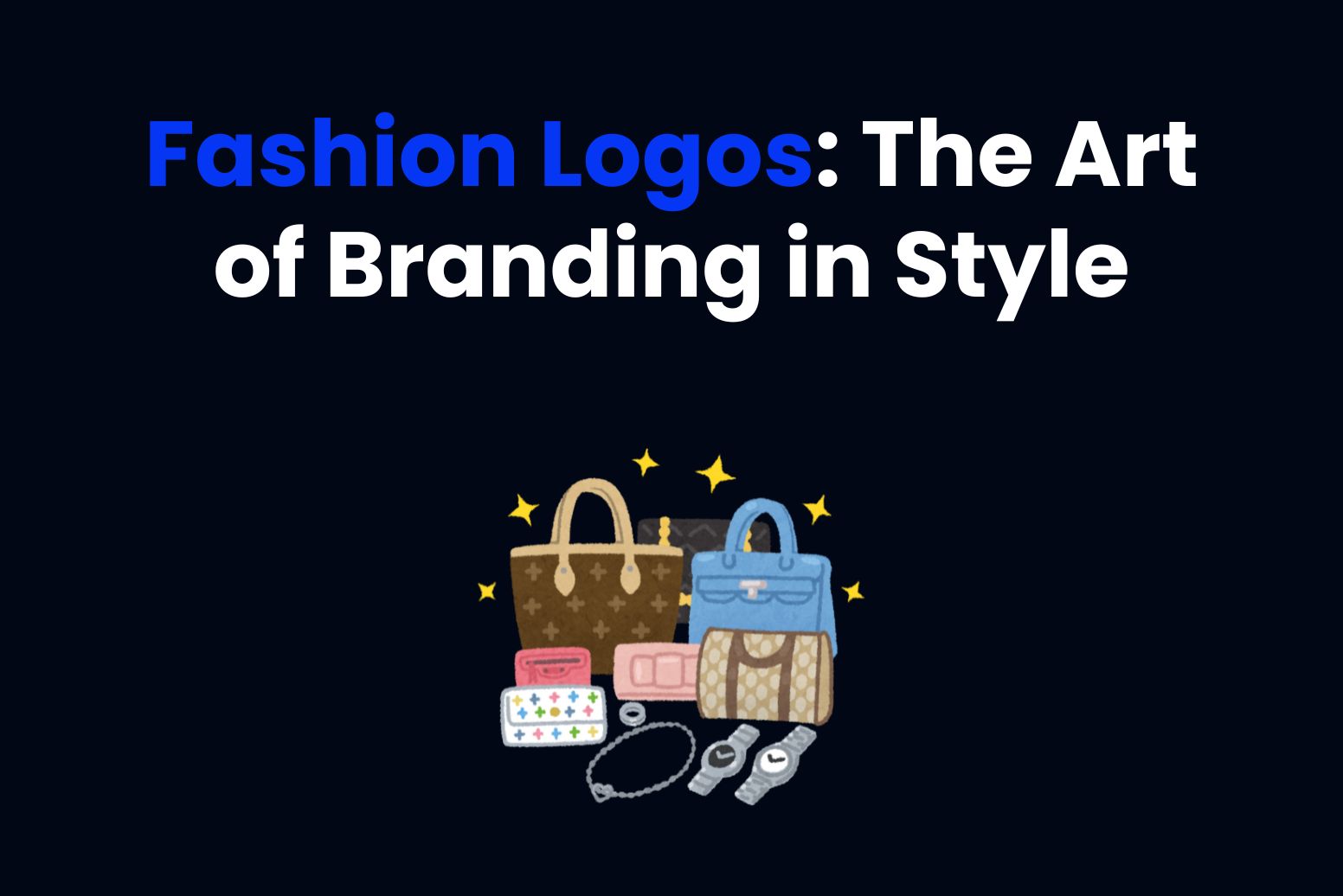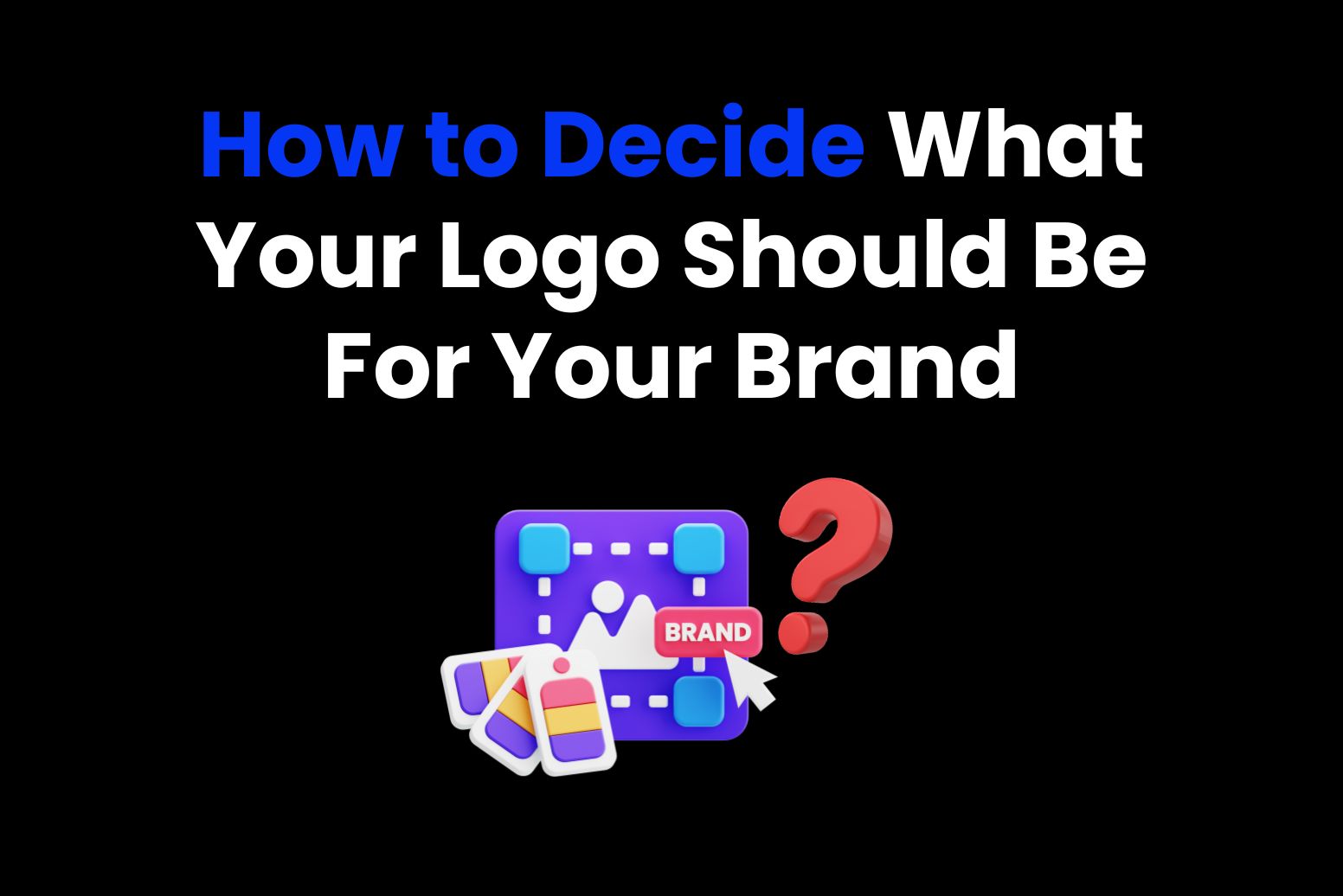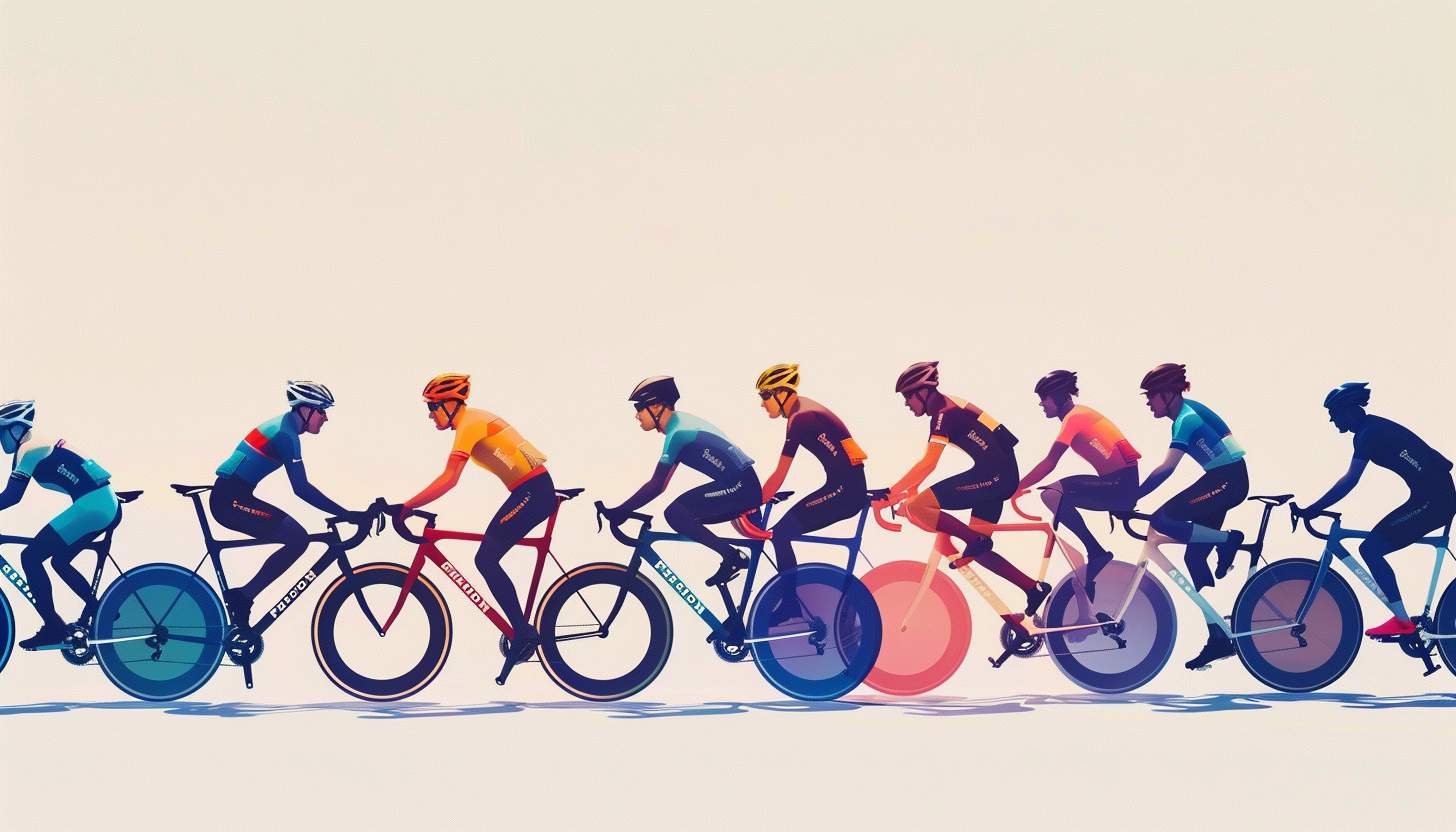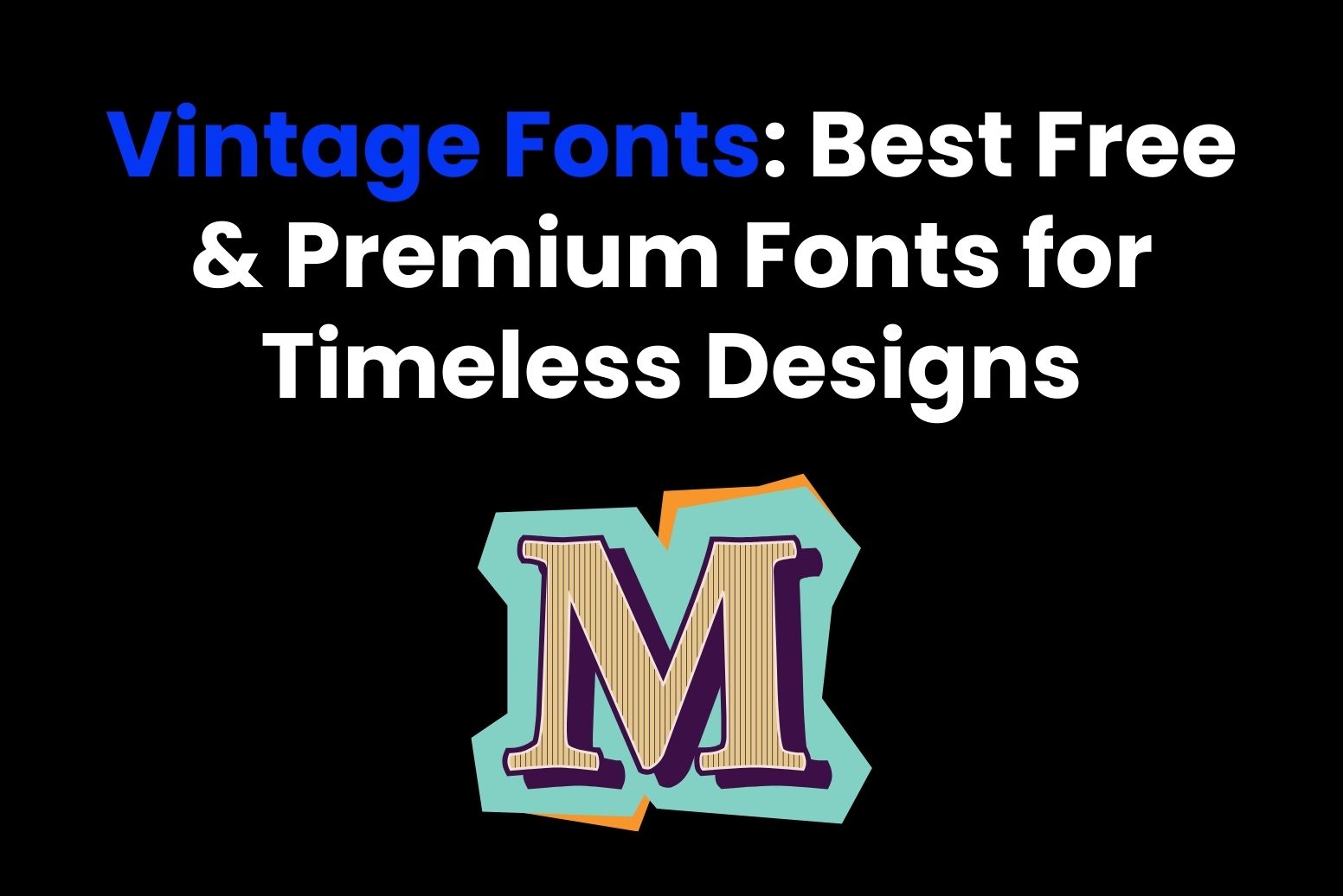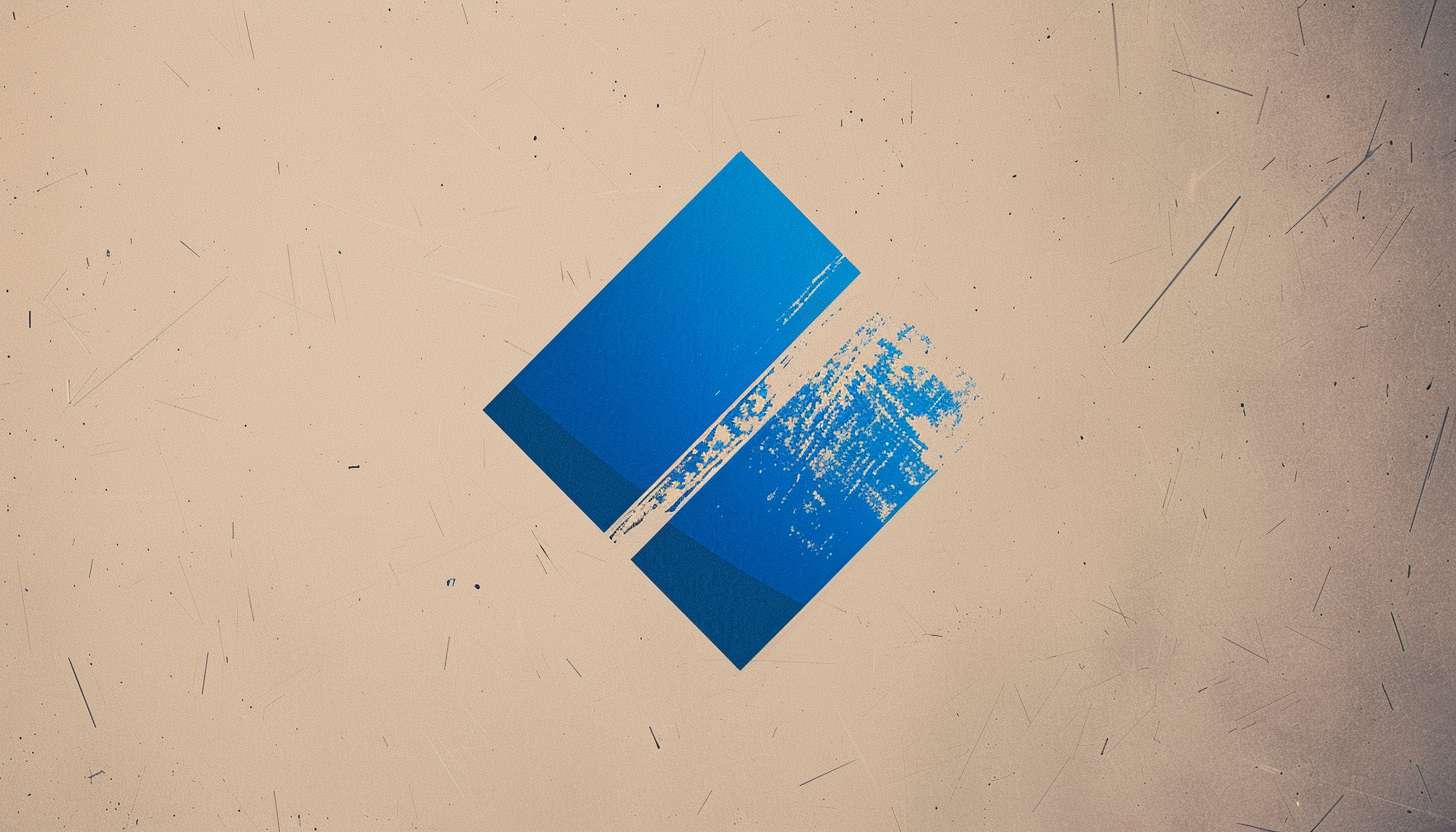Fashion Logos are more than symbols; they are the visual identification of brands, expressing their ethos and values. In the world of fashion, logos play a very important role in defining brand recognition, perceptions by consumers, and market appeal. A proper logo communicates the story of the brand while being associated with profound emotional connections with the audience. From iconic monograms like Chanel to bold modern designs like Off-White, logos shape how the world perceives fashion brands. Using tools like Arvin AI, fashion brands can now very easily create logos that best fit their identity and meet market demands.
Part 1: The Evolution of Fashion Logos
From humble beginnings, fashion logos have evolved into defined identity and status. The evolution of fashion logos has necessarily reflected a shift in design trends but strongly represented shifting cultural, technological, and social influences on the industry. We will trace these developments as we proceed to the following section.
Early Beginnings: How Logos First Emerged in Fashion
The first logos in fashion were seen as early as the early 20th century, when the brands started stamping their clothing with symbols that differentiated them from others. Logos initially signified quality assurance; they were symbolic of craftsmanship and exclusivity. Louis Vuitton, for instance, created a monogram symbolizing heritage and artisanal value. Eventually, logos became identity marks, surpassing the original function as a mere status and aspiration indicator. For instance, intertwined “CC” by Chanel has become a global trademark of elegance and sophistication.
From Monograms to Minimalism: The Shift in Logo Design Trends Over the Decades
Historically, logos evolve with changing designs. As fashion design has been evolving over time, the mid-1900s depicted ornate monograms that truly reflected opulence and royalty. However, with the changing demand of the customers, simplicity and simplicity became the norms of the time. The times of 1990’s came to be known as a bold age through the sleek lines of Calvin Klein’s minimal logo. Currently, minimalism rules the world of fashion logotype, which the Balenciaga and Celine have embraced using sans-serif typography that is clean, emphasizing modernity, and easily accessed.
Influence of Cultural and Design Movements on Fashion Logos
While not exempt, cultural and artistic movements are also a reflection of its era that fashion logos reflect.
- Art Deco Influence (1920s-1930s): Geometric shapes and symmetry prominent in art deco style in fashion logotypes are sophisticated and have been found in fashion logos like Gucci among others.
- Pop Culture (1960s-1980s): Logotypes were flashy, playful, the pop art’s exuberance. Versace is one brand that has put these colors into their logotypes alive with graphic elements.
- Modern Minimalism (2000s-present): The logos of today are minimalist, clear, and versatile, as the digital branding requirements demand. Brands like Zara have redesigned their logos to suit a global, tech-savvy audience.
Part 2: Key Elements of a Successful Fashion Logo
A good fashion logo is more than an image; it is a visual representation of the soul of your brand. In such a competitive field as fashion, the logo has to pop, grab attention from your target audience, and evoke the values, personality, and uniqueness of your brand. The following section goes on to highlight the basics that comprise a memorable and effective fashion logo: simplicity, color, typography, and symbolism.
Simplicity and Elegance
Luxury fashion logos have engraved into them their simplicity and the elegance of time. From product tags to digital advertisements, minimalistic designs are relatively easy to recognize and adaptable in many mediums. Simplicity is sophistication, as too many details can water down a brand’s identity. Iconic ones such as Chanel and Prada standout because of clean lines and unobtrusive elements that maintain the exquisite appeal of being rich and exquisite.
Typography in Fashion Logos
Typography holds the most significant place in making a fashion logo unique. A certain type of font, in terms of size and letter spacing, can give the brand certain feel and create brand values. Serif fonts are mostly understood to be heritage or tradition, while sans serif adds to modernism and minimalism. Only when well-spaced does the text read fluently and balance the design of the logo related to the identity of the brand.
The Power of Color Psychology
Colors in a fashion logo are not used for mere decoration but to express feelings and create brand perception. Black and white dominates luxury fashion because of the sophistication and timelessness they symbolize. Red is bold, symbolizing passion and power, while soft pastel colors symbolize softness and femininity. Strategic color use can make a brand stand out and influence the way consumers perceive it.
Emblems vs. Wordmarks:
Emblems and wordmarks are the two main types of fashion logos. The emblems, like Ralph Lauren’s polo player or Versace’s Medusa, include imagery to establish a unique visual identity. Wordmarks, like Gucci or Balenciaga, rely on stylized text to build brand recognition. The choice between the two depends on the target audience and messaging goals of the brand. While emblems tell stories and have tradition, wordmarks are modern and clear.
Part 3: Iconic Fashion Logos and What Makes Them Timeless
The fashion logo is much more than an icon. The fashion logo speaks of a brand’s identity, its values, and its vision. Iconic logos create instant emotional connections with their target consumers; this will take time to cultivate loyalty and recognition. Here are some of the most iconic logos that represent fashion at its finest.
Louis Vuitton: The Enduring Appeal of Monogram Designs
Louis Vuitton’s monogram, designed in 1896, is the epitome of heritage and elegance. The interlocking “L” and “V” letters, coupled with floral and geometric motifs, represent exclusivity and craftsmanship. Japanese and Oriental art elements served as the inspiration to develop the design that would combat counterfeiting and establish an identity. The monogram now adorns everything from luggage through high fashion while continuing to embody lasting luxurious status.
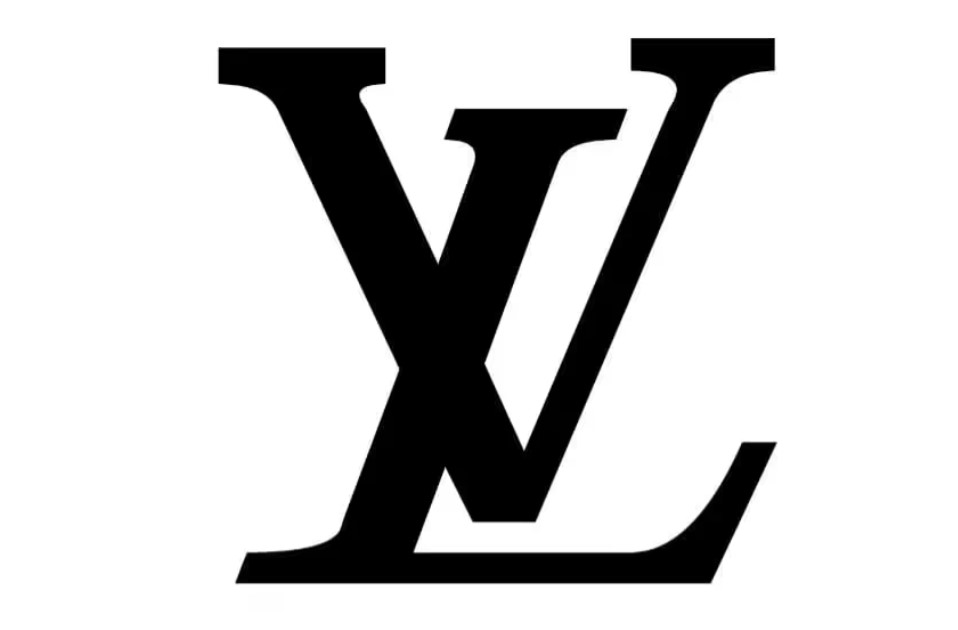
Nike: The Story Behind the Iconic Swoosh
Graphic design prodigy Carolyn Davidson designed the Nike swoosh in 1971. They are one of the most famous examples of graphic design simplicity and intention. Mean to create a Greek goddess of victory, swoosh ideally represents the idea of motion and speed and, more specifically, athletic excellence. Through its universal appeal Swoosh expresses both innovation and empowerment to strongly affect sports participants as well as consumers in their dynamic relationship with the brand. Stretching across Nike’s story the sportswear company solidified this logo’s timeless value.
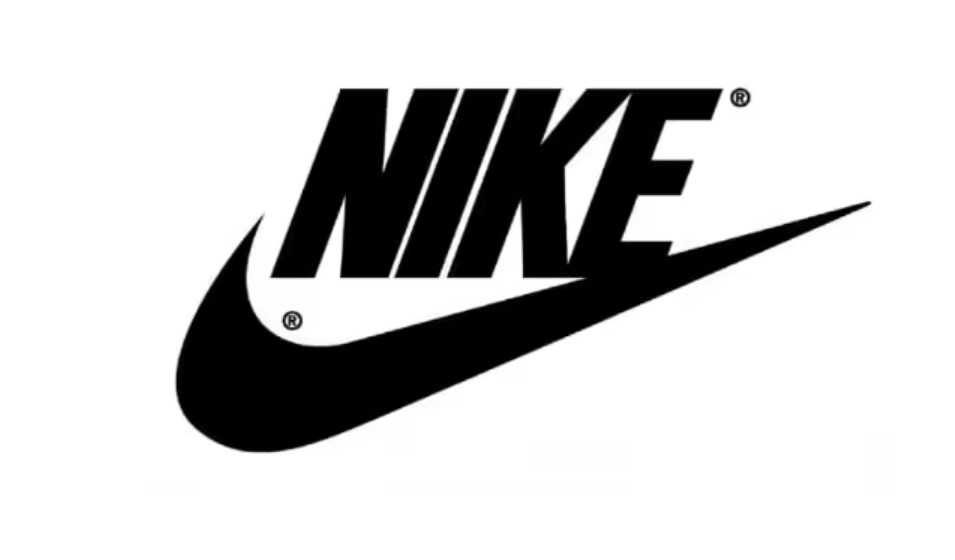
Chanel: Mastering Elegance with Simplicity
An emblem of eternal beauty consists of the Chanel logo which unites two “C” characters. This design emerged during the 1920s under Coco Chanel’s creation and reflects ultimate luxury and elegant minimalism. Fashion trends cannot compete with the Instantly recognizable power of this design which combines simplicity and symmetry. The logo typically symbolizes Chanel’s purpose of enabling women empowerment through practical and elegant design philosophy. By integrating the logo gracefully on luxury goods like perfumes along with handbags the brand demonstrates its status of exclusivity.
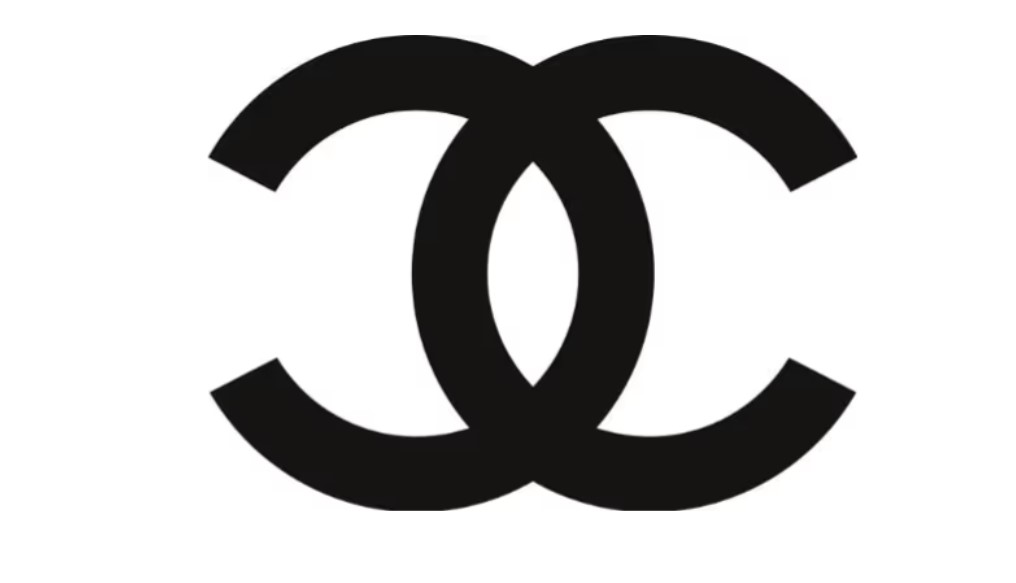
Gucci: Reinventing Classic Logos for Modern Appeal
Gucci interlocking “G” logo from 1930 is innovation meeting tradition. GG logo is a creation and it epitomizes quality and luxury emanating from Guccio Gucci, as the letters corresponds to his initials. For all these years, Gucci maintained reinvention of its logo and came about through collaboration and bold reinterpretation using bright colors, playful patterns, and modern aesthetics. This flexibility has helped make Gucci a brand which cuts across age, appealing both to the youth and the elder, yet always retaining its classic style.
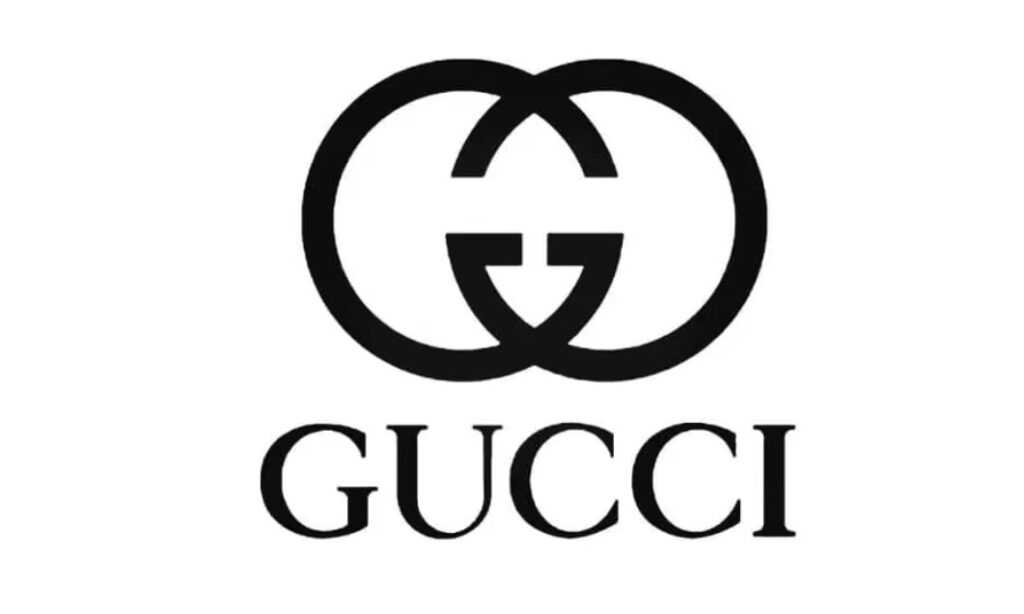
Balenciaga: How Bold Typography Disrupts Traditional Norms
Balenciaga’s logotype is far from traditional logos in the realm of fashion branding. With a sans-serif font and all in uppercase, it shows a very modern and avant-garde approach from the brand. This logo was under the creative direction of Demna Gvasalia, depicting minimalism and disruption. Instead of a lot of symbolism in the form of icons, Balenciaga focused on strong typography and made itself the vanguard in fashion. It provides the younger consumer with an edgy appeal in its logo, offering stark simplicity. Such bold design, coupled with new-age marketing tactics, has placed Balenciaga among the most respected voices in the world of modern luxury fashion.
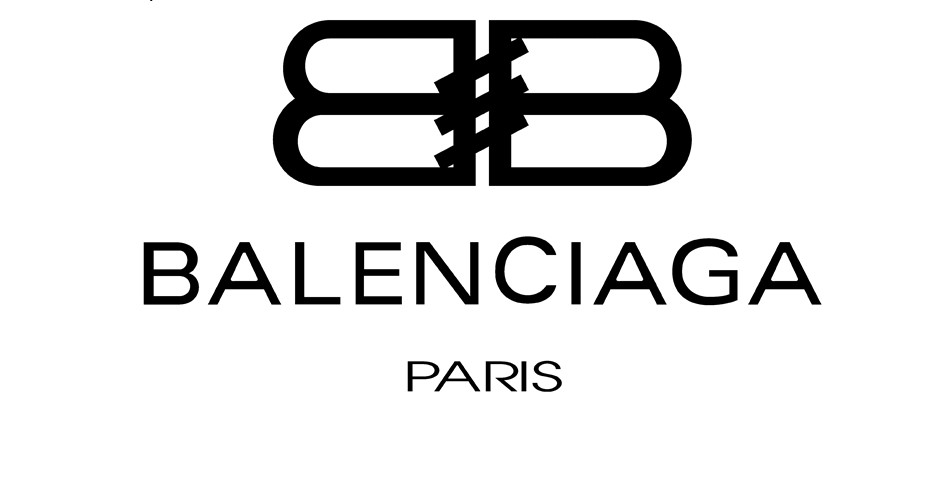
Part 4: How to Design a Memorable Fashion Logo
The foundation of building a strong brand identity is in the creation of a fashion logo that would be appealing to the target audience and stand out in a saturated market. A memorable logo is the cornerstone of your brand and enables you to connect emotionally with consumers while ensuring long-term recognition. This section explores the key steps and tips in creating a fashion logo that leaves an impression.
Define Your Brand Personality
A fashion logo is more than a simple symbol; it represents your brand’s personality and values.
The first step, therefore, will be to outline your brand personality. Think if your brand would be luxurious, sustainable, bold, or minimalist. For instance, if your brand targets sustainability, then earthy colors and naturalistic motifs could really work. However, a luxury brand would use elegant serif fonts and muted tones to give it a sophisticated look. Use the logo design to achieve harmony in your branding. This is from the packaging, social media, or even the promotional stuff.
Research Your Target Audience
A great logo is made when an individual really gets a feel of their target audience. Understand the demographics, lifestyle preference, and shopping behavior of your target market. For instance, new, colorful designs may appeal to young customers, whereas mature clients will be attracted more by traditional and elegant designs. Studying the logos of your competitors may give you an idea of what is appealing to your target market so that you do not use any clichés or overused designs. A logo that speaks to the heart of your audience’s preference will emotionally connect with them much better.
Collaborate with Professionals
Professional designers will bestow a really good quality outcome for your logo, and even good design software can make the difference of quality. Good designers are creative and have a lot of experience in designing something unique that matches your vision. For budgets smaller in size, options in Adobe Illustrator or Canva are available, which can create very effective logos quite professionally with features to customize and refine.
Avoiding Common Mistakes
Most logos go wrong for very common reasons: overcomplicating the design; it will look terrible if printed on a small tag or on a business card, on the web, and so forth; simplicity breeds clarity and power. Trends are okay sources of inspiration; however, trying to do everything that is in is a great way to create something that’s dated in three years. Always test how your logo will look in multiple sizes to be effective whether placed on a billboard or a clothing tag.
Part 5: Top Premium Tools for Designing Fashion Logos
Logo designing requires the most proper tools one should use- for a professional as well as beginners. The scale may vary with its free-to-user-friendly platforms with various premium designs of software containing additional features to add personalization. This may include:
Adobe Illustrator
Adobe Illustrator is the gold standard for professional logo design. With its vector-based system, you can create any logos that can look awesome on any medium. Though Illustrator really has much to offer in terms of customization and precision, it has a very steep learning curve and is on the expensive side, so it would be most suitable for experienced designers or for highly detailed and professional logos.
Canva
Canva is perfect for the beginner and small business owner in a hurry to need quick, visually appealing designs. The drag-and-drop interface and comprehensive template library ensure easy creation of stylish logos without needing advanced skills. It offers both free and premium plans but may lack flexibility and more advanced features offered by professional-grade software. Canva is popular for simple yet effective logo creation.
Looka
Looka is another application that generates logos by using data from your brand. This service would be ideal for those who want an automatic, quick solution. After filling out information like a brand name as well as the type of design one likes, Looka churns out several logo designs to pick from. The platform offers branding kits, aside from logos, and its ability to customize after generation is a bit limited. Looka is appropriate for entrepreneurs in need of a fast logo and do not require advanced editing features.
Logo Maker
Logo Maker is a no-nonsense tool for creating logos. It gives a range of templates that can easily be customized according to the needs of your brand. Though it is not as powerful as Illustrator, its simplicity is the reason for being a very effective tool for the little design people who don’t need many of the options offered by those applications. Anyone who wants a clean, professional logo without steep learning curves and with little expense would find Logo Maker very effective.
Part 6: Arvin AI Best Free AI Tool for Fashion Logo Design
Arvin AI has revolutionized the very concept of designing a fashion logo, making it simple, intuitive, and highly effective. This high-end AI-based application is built to cater specifically to the unique needs of the fashion industry and allows features that mix creativity with functionality. Whether an entrepreneur or a developed brand, Arvin AI has been providing top-notch tools to make logos that effortlessly capture the personality of your brand. With its focus on customization, scalability, and user-friendliness, Arvin AI lets users create high-quality logos that appeal to the target audience yet are of the highest standards in design.
Key Features of Arvin AI for Logo Creation
- AI-powered customization lets your logo fit perfectly into your desired fashion style-from minimalist to lavish.
- Built-in color palette recommendations provide brand-aligned options that create visual appeal and identity.
- Export multiple file formats of very high resolutions; hence your logo looks fine everywhere.
- Simple, friendly user interface allows one to make their logotypes by minimizing efforts to give polished logo looks even with new users.
- Incorporating current designs is assisted with timelessness and beauty.
Steps to Use Arvin AI for making Logo
Step 1: Go to the Arvin AI Website
Open your browser and go to AI logo designer to start designing a unique, transparent company logo.
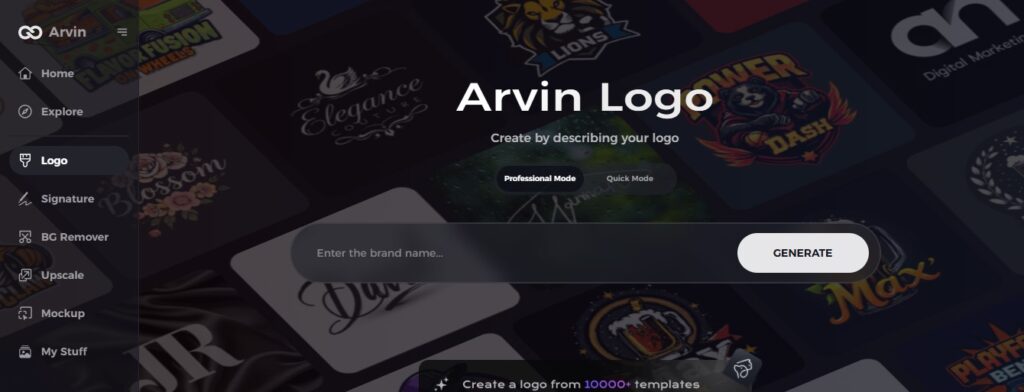
Step 2: Enter Your Company Details
Provide your company’s name and select its category. Request a transparent logo to let the AI generate designs tailored to your specific needs and business representation.
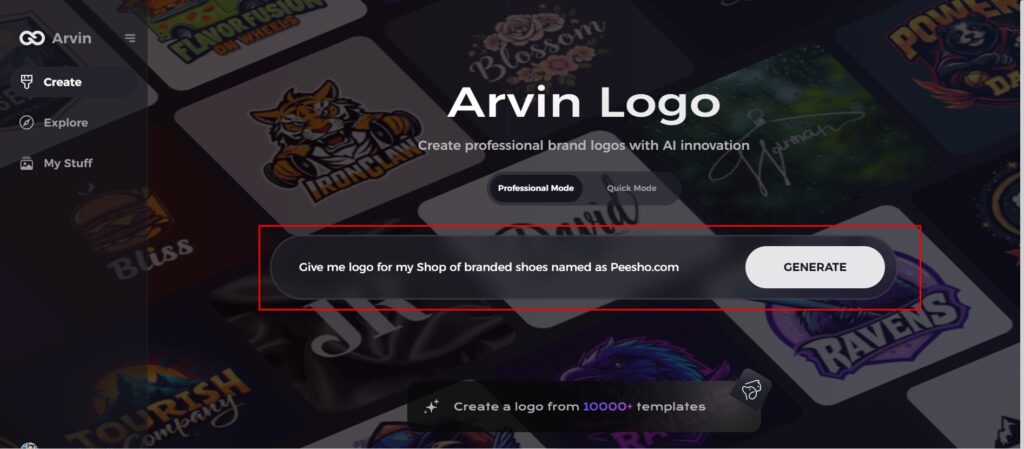
Step 3: Choose Your Industry
Select the industry that you do business in. This selects the AI to create logotypes that fit your brands values and market niche as well.
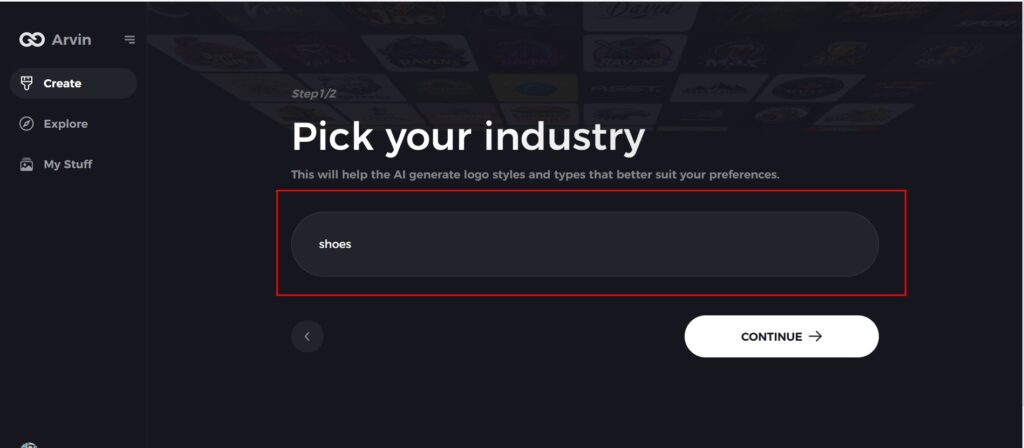
Step 4: Select a Design Theme
Select a design style that you like. You can leave it on “no style” if you haven’t decided yet. It creates some amazing designs for you without any input from you.
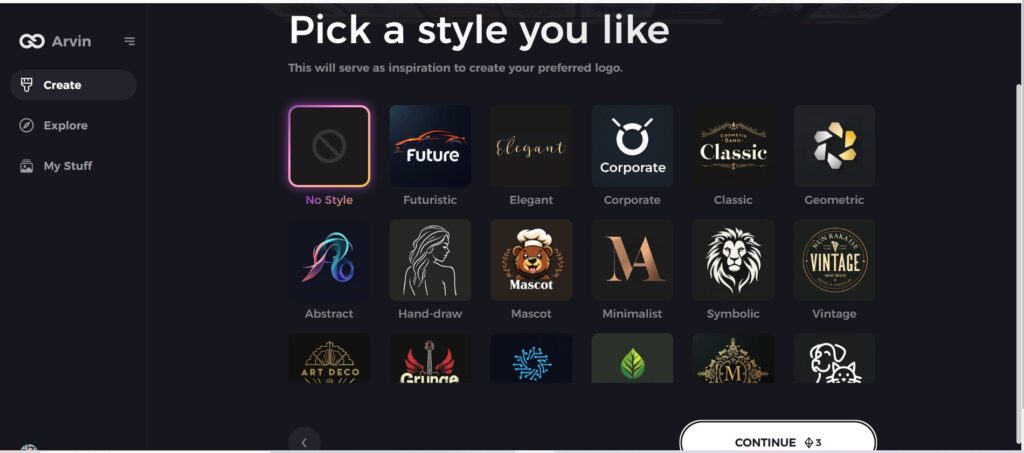
Step 5: View Logo Concepts
Review the logo designs created by Arvin AI. Scroll through the options to find one that resonates with your brand identity.
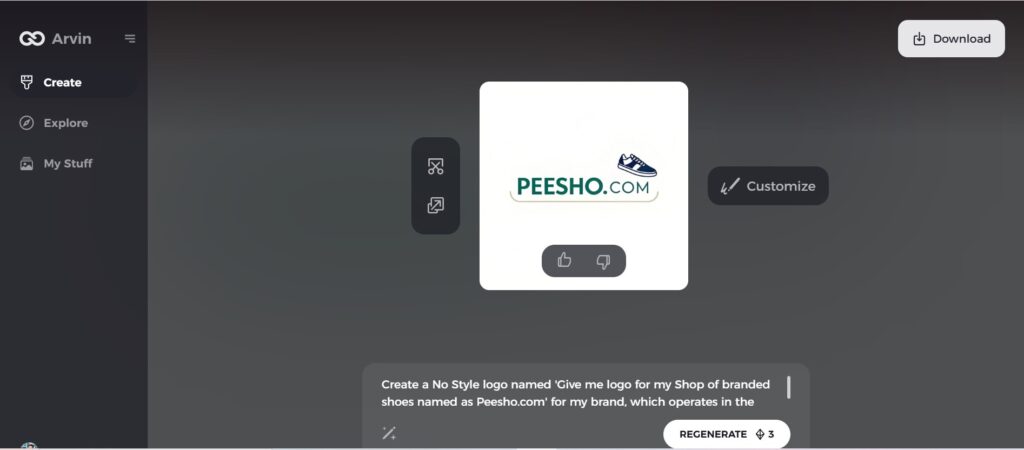
Step 6: Customize Your Logo
Refine the selected logo by tweaking colors, fonts, and icons to align perfectly with your brand’s personality and aesthetics.
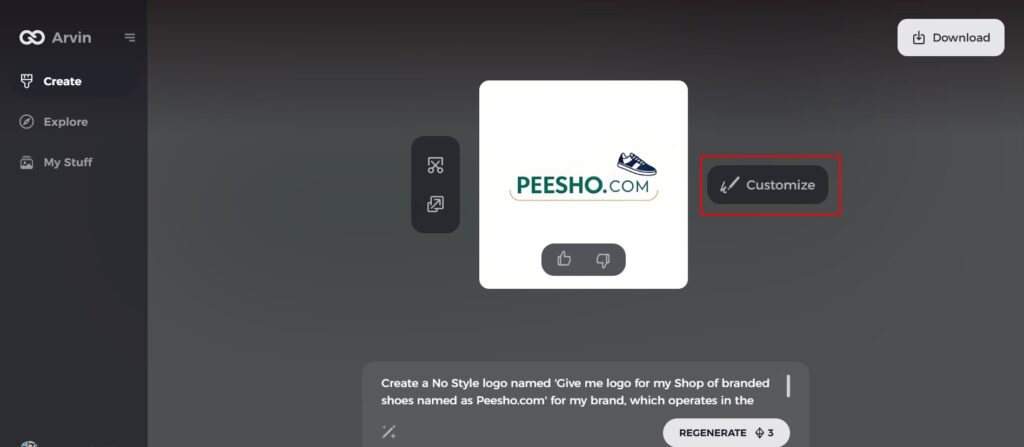
Step 7: Download Your Final Logo
Once satisfied, download your logo in versatile formats like PNG or SVG, ensuring it looks professional across websites, social media, print, and other media platforms.
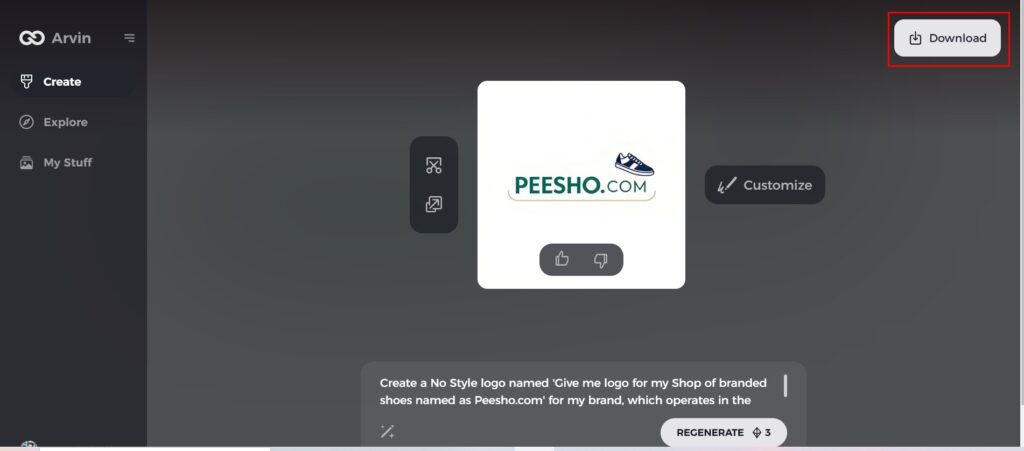
Part 7: Trends in Fashion Logo Design for 2025 and Beyond
With time, the fashion world is shifting to new technological advancement, shifting consumer preferences, and cultural shift. This chapter addresses the evolving trends that are bound to shape tomorrow’s logos to put you one step ahead of a constantly shifting industry.
Minimalism Continues to Dominate
For fashion logos, the element of minimalism is what remained throughout 2025. Simple and clean lines, not to mention one-colored schemes, can be extremely popular since they stand out for years with their minimal use of resources for digital or even physical implementations. Minimalism allows brands to project a distinct personality without overwhelming audiences with too much detail. In the genre high-fashion, one excellent example is how expensive fashion still uses very slim, minimalist lines on Chanel or Prada brands.
Hand-Drawn and Personalized Logos for Indie Brands
More and more indie brands become available in the market and hand-drawn and custom logos are what most people target. Authenticity and uniqueness are spelled through such designs. This is the reason why these elements of quirky lettering or imperfect shapes make a consumer feel that the brand makes an individual connection with its audience. Indie fashion brands are very often making use of this concept and utilizing small-scale designers to project their brand as a handcrafted or bespoke offering.
Abstract Designs and Dynamic Typography
Abstract concepts are getting to be increasingly used, as they depict freshness and artistry. Instead of making use of straight symbols or illustrations, firms are going toward geometric shapes, asymmetrical composition, and motion typography, all for that dramatic effect. Motion typography is pretty suited to digital advertisements and animated graphics. This is exactly what the fashion world is moving toward-innovation and creative themes.
Sustainability-Driven Logos and Eco-Friendly Branding
As sustainability becomes the catchphrase, logos evolve to portray ecologically sensitive value. Brands include green tints, earthy textures, and earth-inspired patterns within their marks as a way to convey that they are serious about the environment. Additionally, environmental-friendly brands usually brand themselves with a logo of recycled materials or biodegradable packaging as an indication of reducing their carbon footprint. It’s a great trend for sustainable clothing lines and eco-friendly apparel brands.
Part 8: How Logos Impact Fashion Branding and Marketing
A logo is not a symbol, but the base of your fashion brand. Understanding logos is vital because they form the basis to affect both fashion brands and marketing strategies which will deliver enduring success in this challenging industry.
Building Brand Loyalty through Logo Recognition
A well-designed logo fosters brand recognition, which is key to building customer loyalty. When consumers associate a logo with quality and style, it becomes a symbol of trust. For instance, iconic logos like Nike’s swoosh or Gucci’s double G is instantly recognizable and evokes strong emotional ties with their target audiences. Consistency in logo usage across all platforms ensures that brands stay top-of-mind for customers.
Creating Emotional Connections with Customers
Logos are more than just visual symbols; they are a medium to emotionally connect with customers. A well-crafted logo will create emotions that consist of luxury, excitement, or sustainability, depending on the brand messaging. The combination of pastel hues together with curvaceous shapes enables designers to build elegant and calming designs which work well in female fashion. The emotional relationships established through logos become a foundation for keeping customers and generating multiple purchases from them.
Logo Placement on Products and Packaging: Strategic Visibility
It has visibility for the brand with awareness offered through strategic placement on apparel and accessories as well as on packaging. On a T-shirt, a logo on the front or the backside of a sneaker may be seen to hold the attention of the beholder. Likewise, the premium product-looking packaging of a nice ‘unboxing’ experience allows sharing over social media.
Utilize Social Media and Digital Marketing with Logos
Social media and digital marketing have emphasized the significance of logos. An eye-catching logo catches attention on Instagram and TikTok. The more attention to detail used in the marketing with an animated logo or filter that puts the logo as the main point increases engagement. Using the same logos for profiles on social media, ads, and influencer collaborations creates one identity appealing to a digitally experienced audience.
Conclusion
Investment in good fashion logos is inevitable to establish brand identity, and it will only surely bring long-run success in this competitive fashion industry. An ideal logo captures the attention, as well as constructs the value and personality of the brand, which also leads to more recognition and trust. Arvin AI provides an easy solution toward the creation of very great logos in the fashion design field where you are empowered to design unique, high-quality logos quite comfortably.
FAQs About Fashion Logos
What makes a good fashion logo design?
A great fashion logo should be memorable, versatile, simple, and also convey the personality of your brand and relate to your target audience.
How do colors affect fashion logos?
Colors have an effect on human feelings and perceptions. For example, black often means luxury, and pastel colors create softness and approachability. Selecting the appropriate color scheme will be the first step toward creating the desired message and brand values.
Can I design a fashion logo without professional help?
Yes, with tools like Arvin AI, anyone can design a professional-quality fashion logo without prior design experience. The platform’s AI technology simplifies the design process, making it accessible to anyone looking to create a standout logo.
Why are iconic fashion logos so simple?
Simplicity ensures versatility and timelessness, making it easier to adapt logos across different mediums and maintain brand recognition over time. A clean, straightforward logo is often more memorable and impactful than a complex design.

